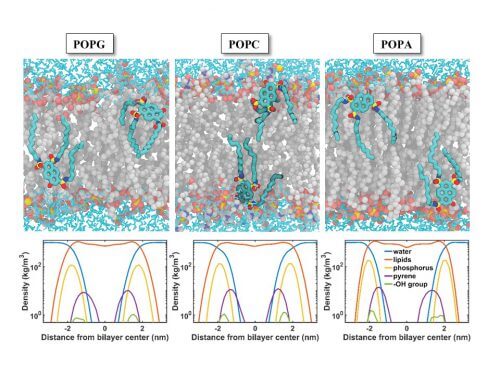Researchers at the Shulich Faculty of Chemistry discovered that these processes are affected by the composition of the cell membrane

Dr. Nadav Amdorski from the Shulich Faculty of Chemistry at the Technion developed an innovative technology for studying proton transitions in the membrane related to the production of energy in cellular respiration and photosynthesis processes. The study was published in the journal of the American Academy of Sciences - PNAS.
Energy is an essential resource in the living world, and without it there would be no life. All animals and plants use the same type of energy currency called ATP and store the energy as chemical energy. The molecular mechanism for generating ATP is based on a protein located inside a membrane. It is possible to simulate the activity of the protein as the operation of a nanometer engine driven by protons. When the engine receives fuel - protons - the protein parts move.
The general operation of this protein motor to create ATP is known today, but how do the protons get to the protein? This question has not been fully resolved until now, because the dimensions of the proton movement process, in time and space, are very tiny: movement of a few nanometers in nanosecond time periods.
In the current article, the technology developed by Dr. Amdorski for studying this tiny and fast process that occurs on the surface of membranes is described. The technology is based on an original molecular tracker that sticks to the membrane and releases a proton every time light (photon) hits it. In other words, it is a technology that can produce the fuel to create the energy currency on the surface of membranes with the help of light.
The molecular tracker developed at the Technion is based on a very intriguing chemical molecule called photoacid. When this molecule absorbs light, and only then, its chemical properties change and it becomes a strong acid. The main characteristic of any strong acid is the rapid release of a proton in an aqueous environment, and this is also the case here.
According to Dr. Amdorski, "In monitoring this process, we discovered that the movement of protons on the surface of the membrane, and the interaction between protons on the membrane and protons in the solution, are closely dependent on the composition of the membrane, that is, on the type of lipids that make it up."
This research is a very important milestone in understanding one of the most important processes in nature.
The research was supported by the Chaya Career Advancement Chair program, the Russell Berry Nanotechnology Institute (RBNI) and the Grand Energy Program.
